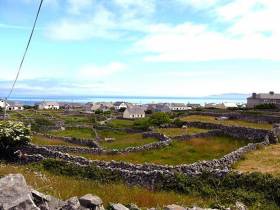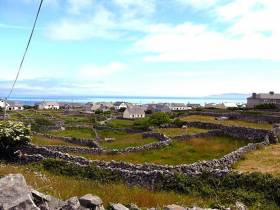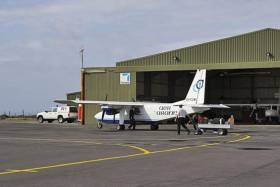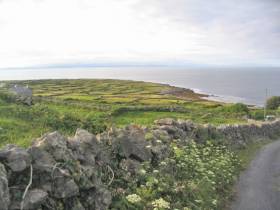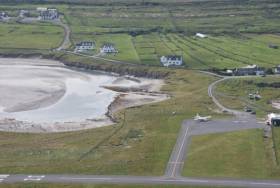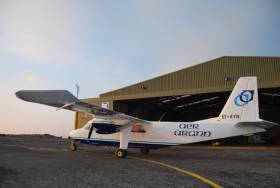Displaying items by tag: Aran Islands
Power Restored To Aran Islands As Cable Repairs Continue
#AranIslands - Electricity supply has been restored to the Aran Islands of Inis Meáin and Inis Oírr four days after a subsea cable fault left almost 400 residents without power.
Galway Bay FM reports that repairs works are ongoing and could take up to four weeks, but affected islanders now have access to generator power since yesterday evening (Monday 8 August) following delays in transporting the necessary equipment with the weekend's severe weather.
Previously a senator had called on the Defence Forces to intervene should the islands' residents have been left without power – and water from their temporarily shuttered treatment plant – for much longer.
Cable Fault Blamed For Leaving Aran Islands Without Power
#AranIslands - A senator has called on the Defence Forces to step in to assist the residents of two Aran Islands who are expected to be without power for several days since an outage on Friday morning (5 August).
According to Galway Bay FM, a fault with undersea cables could be to blame for the loss of electricity on Inis Meáin and Inis Oírr – which has also forced a temporary shutdown of the former's Irish Water treatment plant.
However, the ESB says that with poor weather forecast today (Sunday 7 August), it will be this week at the earliest before a backup power source can be transported to the islands, and many days before repairs are carried out.
Sinn Fein Senator Trevor O’ Clochartaigh said such a long period without electricity would pose significant difficulties for residents in the Galway Bay islands, and asked for the Defence Forces to provide for their basic needs over the coming days.
The outage is yet another setback for Aran Islands residents, who still face uncertainty over the status of their plane service to the mainland, as previously reported on Afloat.ie.
Deadlock Over Aran Islands Flights Deal
#AranIslands - The Aran Islands air service is still without a mainland airport as the deadline for talks on the €3.6 million contract fast approaches, according to The Irish Times.
As previously reported on Afloat.ie, the Department of the Gaeltacht has been in a stalemate with the owners of Connemara Airport – who presently hold the tender for the Galway Bay islands' air link – over the cost of the Public Service Obligation contract.
Prices offered by Aer Arann Islands, which factor in refurbishment and staffing costs, have become a sticking point with the department.
However, one last effort will be made to reach a deal before the deadline next week, according to Minister of State for the Gaeltacht Seán Kyne.
“We cannot pursue a contract if we don’t have an airport," said Minister Kyne, "and at the moment, we don’t have agreement on those terms.”
The Irish Times has more on the story HERE.
Aran Islands Flights Up In Air Over Airport Disagreement
#AranIslands - The Department of the Gaeltacht is in a stand-off with the owners of a Connemara airport that's once again thrown the future of the Aran Islands air service into doubt.
According to Galway Bay FM, the deadline for tenders for the Galway Bay islands' decades-old air link to the mainland had been set to expire at noon yesterday (Friday 3 June).
But it's been extended for another fortnight after the department failed to come to terms with the owners of the airport at Inverin over the cost of the Public Service Obligation contract.
The airport, near the ferry link at Rossaveal, was selected as the mainland terminal for the new air tender two months ago, as previously reported on Afloat.ie.
Subsequent concerns over the potential for increased fares or the replacement of the aeroplane link with a helicopter service – as per the controversial tender late last year – were not entertained by the department citing the ongoing tender process.
#AranIslands - The Minister for the Gaeltacht has backed out of a scheduled meeting with Aran Islands residents over the latest tender for the area's air service, as Galway Bay FM reports.
Locals had been hoping to meet with Minister Joe McHugh to express concerns over potential increased fares for the air route across Galway Bay from the islands to the mainland west of Galway city.
The replacement of the islands' decades-old aeroplane link with a helicopter service, as was mooted in the controversial tender cancelled at the last minute in late 2015, has also not been ruled out.
But the meeting originally set for tomorrow (Thursday 7 April) has been cancelled after departmental officials advised it would be inappropriate while the latest tender is underway.
Just days ago the airport at Inverin in Connemara was selected as the mainland terminal for the new Public Service Obligation air service tender, as previously reported on Afloat.ie.
Galway Bay FM has more on the story HERE.
#AranIslands - Inverin near Rossaveal in Connemara has been selected as the mainland terminal for the new Aran Islands air service tender, as Galway Bay FM reports.
The news will be some consolation to islanders angered by last year's award of the tender to Executive Helicopters, who planned to fly from the islands to Carnmore some 50km to the east of the Rossaveal ferry link.
That tender was cancelled at the end of September, with the previous contract with Aer Arann Islands later extended at the 11th hour, though it is set to expire this coming October.
More recently, MEP Marian Harkin visited the European Commission with two locals to voice their concerns over the particulars of any new tender for the vital air connection between the Aran Islands and the mainland.
Galway Bay FM has more on the story HERE.
#AranIslands - Cost should not be the only consideration when it comes to providing air services to the Aran Islands, according to the European Commission.
That was the outcome from a meeting between Brussels officials and MEP Marian Harkin, who was accompanied to EC headquarters this week by two Aran Islanders to voice their concerns over the tender for flights between the mainland and the Galway Bay islands, as Galway Bay FM reports.
Harkin raised the same issue a month ago in the European Parliament as she called for attention to transport provision for all offshore communities for the EU.
Though the European Commission cannot dictate the terms of such provisions, officials have expressed their expectation that the needs of islands be taken into consideration in any tender contract.
The existing agreement with Aer Arann to provide flights between the islands and Galway was extended at the 11th hour last year after protests against its planned replacement with a helicopter service, but expires this coming October.
Aran Islands Transport Issues Raised In Brussels
#AranIslands - Transport woes in the Aran Islands was raised by MEP Marian Harkin in the European Parliament this week, according to Galway Bay FM.
Calling for attention to all offshore communities in the EU, Harkin highlighted the need for better air and ferry services to arrest depopulation fears, as Galway Bay FM reports.
Islanders have had something of a reprieve since the Government reached an interim deal four months ago to continue flights to the mainland, though the contract for that service will expire in October.
Moreover, ferry services to the chain's largest island Inis Mór were recently threatened over a dispute regarding a contentious passenger levy for the non-PSO transport route, as previously reported on Afloat.ie.
Reprieve For Inis Mór As Ferry Service Continues Into Spring
#FerryNews - Aran Island Ferries has confirmed it will continue sailings between Inis Mór and the mainland after meeting with Government officials on Tuesday evening (26 January).
As previously reported on Afloat.ie, Galway councillors had been seeking a solution to the Aran Islands transport crisis as the non-PSO ferry route was set to end this Sunday over a long-running passenger levy dispute.
But as Galway Bay FM reports, a deal has now been reached to keep ferries running across Galway Bay between Rossaveal and Kilronan into the spring, which entails a subvention from the Department of the Gaeltacht – though the 80c passenger levy remains an issue.
In other news, Galway County Council has denied claims that it is taking legal action against the Department of the Gaeltacht over an alleged €7 million debt related to harbour works on Inis Mór and Inis Meain.
Galway Bay FM has more on the story HERE.
Galway Councillors Seek Solution To Inis Mór Ferry Woes
#FerryNews - Inis Mór residents are being left "in limbo" over the imminent loss of the island's ferry service due to a passenger levy dispute.
Sunday 31 January will be the last day of ferry sailings in Galway Bay between the largest of the Aran Islands and the mainland – and Galway councillors have directed their ire at Gaeltacht Minister Joe McHugh for the transport crisis.
As Galway Bay FM reports, Inis Mór is the only one of the Aran Islands that does not have a Public Service Obligation contract in place or its ferry service.
Islanders have been hit by sharp fare increases for a number of years after the ceasing of the State-subsidised contract for ferry services on a route that has seen an overall drop in passenger numbers by one-fifth in just six years.
Galway Bay FM has more on the story HERE.


























